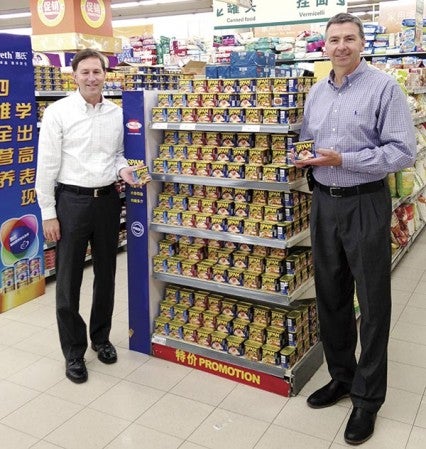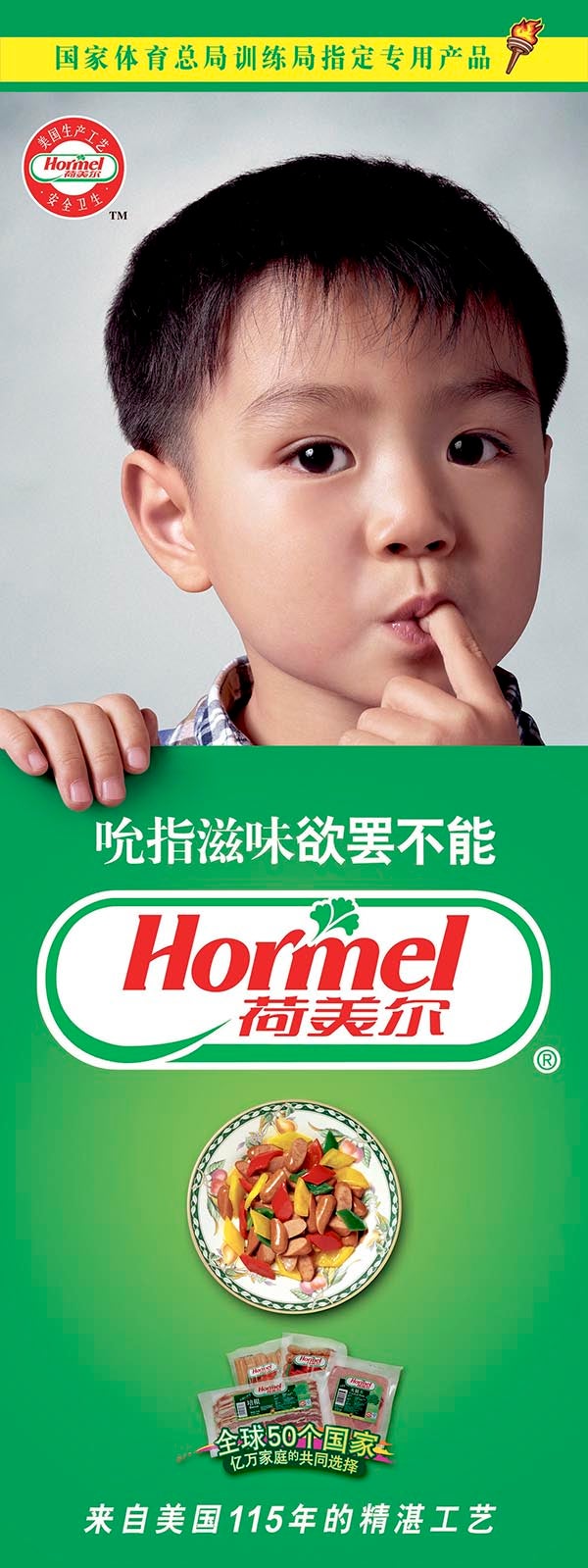Hormel: An eye on China
Published 5:01 am Monday, July 29, 2013
Jim Snee likes to say that no matter what time it is, someone from Hormel Foods International Corp. is hard at work somewhere in the world.
Snee, president of that division of Hormel and group vice president in the company, lives in Austin and is based at Hormel’s corporate office there, but spends much of the year in Asia, Canada, the United Kingdom and anywhere else Hormel’s products are sold or manufactured. He says it’s the dedication from his 1,061 employees in more than 50 countries, along with an expansion in China, that will propel Hormel in the near future.
Hormel International, one of Hormel’s five divisions that until recently was referred to as the “All Other” segment, is becoming a larger and larger part of the Austin meatpacker’s portfolio. In 2008, it accounted for just 4 percent of the company’s profit at roughly $27 million, but through the first half of the 2013 fiscal year, it has contributed $32.7 million in profit, or 8 percent of the company’s total. With a major focus on Asia and especially China led by the company’s iconic brands Spam and Skippy, Snee is confident those numbers will continue to increase.
“We’re very bullish about those opportunities,” Snee said. “And we think we’ll continue to be able to grow faster than the company.”
China, Skippy and Spam
Hormel announced in January it had acquired Skippy for $700 million, and immediately began discussing ways to tap into the Asian, and specifically Chinese, markets.
Skippy is the No. 2 peanut butter brand in the U.S. behind Jif, and the top brand in China, where Hormel CEO Jeff Ettinger says peanut butter is a growing category. Skippy’s projected $100 million in annual sales outside the U.S. — including $30 to $40 million in China — would be an immediate boost of 30 percent for Hormel’s total sales abroad.
“When we compare ourselves to other food manufactures within our industry, we’re really quite low in terms of our sales outside the United States,” Ettinger said earlier this year. “We’ve said we’d really like to increase that. The Skippy acquisition was certainly one great opportunity to do that.”
Specifically, the company wants to use Skippy, a fairly established brand in China, to launch Spam and provide better brand awareness for Hormel.
“We feel [our China business] has finally hit a critical mass, and we’ve seen some very significant growth,” Snee said. “And when we add our Skippy business to our current China business, it really creates a sizeable business that we feel we’ll be able to continue to leverage for good growth into the future.”
Skippy — which Hormel is still on schedule to acquire in China by the end of the fiscal year — is sold in 134 Chinese cities through 128 distributors at 38,000 locations, while Spam is sold in just 34 cities through 51 distributors at 3,500 locations, according to Hormel.
But Hormel isn’t the only meat processor focused on China.
Competitor Smithfield Foods announced in June that Shuanghui International Holdings Ltd., also known as Shineway, will acquire the Smithfield, Va., based pork processor. The deal is reportedly worth $4.7 billion, according to the New York Times. While Snee said they are following the move, Hormel feels it’s still in good position in China.
“We’re always on the lookout, and we need to understand who the competition is,” Snee said, adding he feels they “already compete really effectively with both competitors and we will continue to do so.”

Jim Snee, president of Hormel Foods International Corp., and Hormel CEO Jeff Ettinger with a display of Spam in a Chinese store. Photos provided
Trial and error
In the 1990s, Hormel built plants in Beijing and Shanghai, China, hoping to quickly capitalize on what is now the world’s second largest economy. But the company was focused on selling refrigerated meat products popular in western markets, Snee said, and wasn’t adapting their products to Chinese palettes.
“What we found out in pretty short order was that there wasn’t consumer demand for those exclusively western type products,” he said. “Over time, we’ve learned very successfully that it’s really a balance between western- and Chinese-style refrigerated meat products.”
So as Hormel has been introducing Spam into China in the last several years, Snee said, they made sure they knew their consumers.
“With Spam, we’re starting from ground zero, but we’re introducing this iconic, shelf-stable brand … and it’s a small base, but we’ve seen some really good growth in our Spam business.”
Snee — who was in China and other parts of Asia with Hormel CEO Jeff Ettinger for two weeks last month — said they’re in the process of getting Spam on more shelves, getting feedback from consumers, and using Skippy to create inroads.
“Now, if we put Skippy on top of that, which is a little more well-developed, it takes us a lot more places in China faster,” Snee said.
While Spam is more developed in other Asian markets like Japan and South Korea with specific marketing campaigns, the message to Chinese consumers is not the same.
“It’s all about understanding the consumer,” Snee said. “So we’ve spent a lot of time and effort and money making sure we understand what Spam means to them.”
In China, Snee said, the message is all about “meaty, juicy satisfaction.” In Japan, versatility tops the list.
“It’s not one size fits all,” he said. “It’s customized. It’s localized so it’s meaningful to those consumers.”
Frontrunner
Hormel’s company-wide goal is to grow net sales by 5 percent and profit by 10 percent this year, with the international division leading the way. While Snee says his division doesn’t have specific percentage goals, they’re expected to grow at a faster rate than the rest of the company, something it is on pace to do easily.
The international division has gone from $240.4 million in net sales in 2008 to $363.3 million last year, increasing by an average of 11 percent per year, while profits, at $49.9 million last year, have climbed by 17 percent per year for four years.
For Snee, it comes back to teamwork.
“It’s a real team effort and a group of people who are very committed to making sure our international division delivers that accelerated growth,” he said.
Hormel Foods International
Hormel Foods International Corp. has grown at an even faster rate than Hormel Foods as a whole, increasing net sales by 11 percent and profit by 17 percent over the last four years.
Net Sales
2008 $240.4 million
2009 $236.3 million -1.7%
2010 $268.1 million +13.5%
2011 $338.5 million +26.3%
2012 $363.3 million +7.3%
Profit
2008 $27 million
2009 $27.6 million +2.3%
2010 $26.1 million -5.4%
2011 $36.3 million +38.8%
2012 $49.9 million +37.6%






